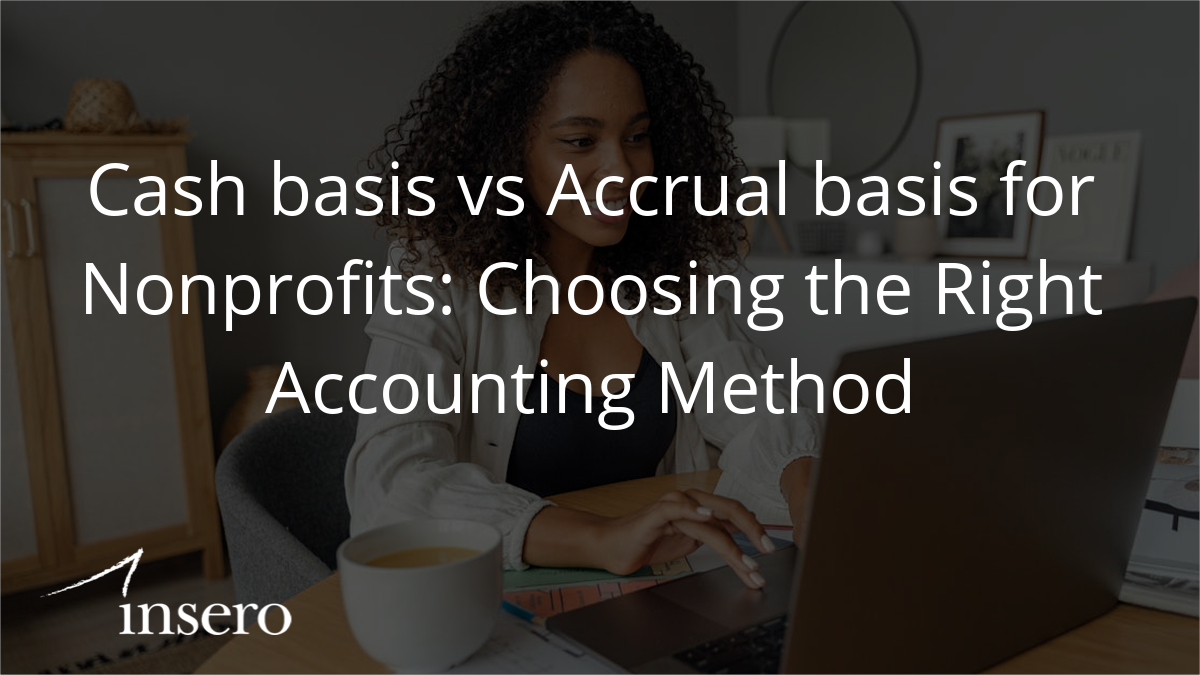ARTICLE | March 01, 2023
Many wealthy individuals have taken steps to maximize their lifetime gift tax exemption to minimize estate taxes when they pass away. Even though the current lifetime gift tax exemption is set to revert to a lower level in 2026, the IRS stated in 2019 that it would not claw back completed gifts. However, in a new twist, the IRS recently proposed new guidance that would allow for clawbacks in certain situations. We’ll provide a background and an overview of the proposed changes in this article.
Background
The Tax Cuts and Jobs Act made several changes to the tax code, including an increase in the basic exclusion amount (BEA), also known as the lifetime gift tax exemption, for estate and gift taxes. The new exclusion amount was set at $10 million adjusted for inflation for tax years 2018 through 2025, after which it will revert to $5 million (estimated to be $6.8 million for the tax year 2026).
Unfortunately, this change created a problem. What if an individual maximizes the basic exclusion in 2025 but dies in 2026? The IRS created a special rule in 2019 known as the anti-clawback rule to address this issue. Essentially, the rule sought to prevent an estate from facing taxation if they use their BEA, but then the BEA drops to a lower level in the future.
However, the anti-clawback rule did not distinguish between completed and deferred gifts. A completed gift occurs when the donor makes a gift during their lifetime and does not retain use and control of the asset. A deferred gift occurs when the donor makes a gift during their lifetime but retains use and control of the asset. For example, if a donor gifts real estate to a child but retains a life estate (enabling them to live in and use it while they’re still alive), this could be considered a deferred gift.
The problem is that individuals have been using deferred gifts to maximize their BEA ahead of the planned reduction, and the IRS and Treasury don’t consider a deferred gift to be a completed lifetime gift. In response, the Treasury Department issued proposed regulations addressing situations where an estate could be taxed at the reduced BEA for deferred gifts made before the reduction in the BEA.
Proposed regulations
The proposed regulations address situations in which gifts made during a donor’s lifetime, while the BEA was increased, could potentially be subject to the reduced BEA at the time of a donor’s passing in 2026 or later, thus limiting the anti-clawback rule. The regulations stipulate that a donor’s lifetime gifts might be subject to estate taxes, even if the gifts were free of tax when made before 2026. Specifically, if a donor makes a deferred gift wherein they retain a beneficial interest in the gifted asset, the Treasury Department’s new proposed regulation will consider such a gift a “deferred gift,” and one that can be subject to estate taxes under the reduced BEA.
This exception to the anti-clawback rule clarifies which gifts might be considered deferred gifts, or testamentary transfers, for estate tax purposes and thus subject to the reduced BEA in effect at the time of death. It’s important to note that this only causes taxation if the deferred gifts cause an estate to be valued higher than the BEA at the time of the donor’s death, and only the asset value over the BEA would be taxable.
While the Treasury Department’s guidance does not provide an exhaustive list of deferred gifts, it does provide examples of certain types of deferred gifts that would be exempted from the anti-clawback rule, including:
- Gifts of assets wherein the donor retains a lifetime interest,
- A remainder interest in grantor-retained annuity trusts (GRAT), and
- Enforceable promissory notes
Assets in which the donor retains a lifetime interest
A lifetime interest is a type of ownership interest in an asset that lasts for the duration of an individual’s life. For example, a donor gifts a parcel of real estate to their son, but retains the right to live on the property for the rest of their life. In this case, the donor’s son may be the legal owner of the property, but the donor still has a beneficial interest (the right to use and live in) in the real estate for the duration of their life.
Because the donor retains a beneficial interest in their gift for their lifetime, the gift will be considered a deferred gift. Also, since the son only obtains exclusive use of the asset upon the donor’s death, the asset will be considered a testamentary transfer. As a result, the asset will be part of the donor’s gross estate, and any value over the BEA at the time of death would potentially be subject to federal and state estate taxes.
Grantor-retained annuity trusts
A GRAT is a type of trust where the trust’s creator (the grantor) retains a right to receive annuity payments from assets placed in the trust, even though a separate trustee holds the assets. For example, let’s say John Doe creates a GRAT with a lifetime interest in annuity payments under the trust. He transfers 1,000 shares of a startup into the trust and retains the right to receive annuity payments from distributions made by the startup each year. In such a case, the trust legally owns the original shares, but John retains a beneficial interest in distributions from the startup. Because John retains a beneficial interest in the distributions under the trust, the asset could be subject to clawback if John passes while still having rights to the startup’s distributions.
Enforceable promissory notes
A promissory note is a legal instrument that documents a loan between two parties. The first party, known as the grantor, agrees to lend the second party, known as the grantee, a sum of money in exchange for payments with interest over a specified period.
In some cases, the grantor may retain a lifetime interest in a promissory note. For example, let’s say John Doe gifts a promissory note payable by him to his trust (an enforceable promise gift) while the BEA is high but dies in 2026 when the BEA reverts to $6.8 million. On John’s death, the assets used to satisfy any unpaid portion of the note payable to John’s trust are part of John’s gross estate and thus subject to the reduced BEA. Effectively the outstanding liability related to the note is not allowed to reduce the taxable estate at the time of death.
18-month rule
The proposed regulations also create an 18-month rule, whereby completed gifts might be clawed back into a decedent’s estate if they relinquished control of the gift less than 18 months before their passing.
For example, let’s say John Doe owns shares of a startup worth $9 million. He gifts the shares to his son in June 2025, during the increased BEA, then passes away in June 2026. Under the proposed regulations, the transfer of the shares to John’s son would be considered a testamentary transfer. This means the value of the shares will be included in John’s gross estate and subject to the reduced BEA in 2026.
However, the proposed regulations will not apply to the termination of a retained interest within the 18-month window before the donor’s death if the termination was pursuant to the original transfer instrument.
For example, John Doe creates a GRAT in 2022. According to the GRAT’s terms at the time of creation, John Doe will lose his retained interest in the GRAT in June 2025. At that time, John Doe’s son will be given all interest in the GRAT. John Doe subsequently passes in June 2026, within the 18-month period when completed gifts can be clawed back into his estate. Yet, John Doe did not choose to make the gift in June 2025 contemporaneously, instead, the transfer was pursuant to the original transfer instrument. As a result, the value of the GRAT will not be clawed back into John’s estate for estate tax purposes even though he passed within the 18-month window after its transfer.
What are the implications?
The proposed rule could lead to deferred gifts being clawed back into the donor’s estate, even if the gifts are made before the reduction in the BEA. Further, if the deferred gifts appreciated in value between the time the gift was made and the time of the donor’s death, it could add even more to the donor’s gross estate.
It also means many individuals will need to make gifts before the reduction of the BEA in 2026. And, they need to be wary of how those gifts are made. If they retain an interest in the gifted property, it could potentially be clawed back into their estate. This may lead to a reduction in gifts and instruments where the donor retains an interest, such as life estates.
Finally, because of the 18-month rule’s exception of certain transfers, many note instruments will need to be in effect before the 18 months and contain a completed transfer date of December 2025 (or earlier) to prevent clawback. This may lead to a massive shift in wealth from one generation to the next before 2026.
How to lock in a gift exemption
First, individuals who may be affected by the change in BEA (those with estates valued at $6.8 million or more) will need to take advantage of the increased BEA by making completed gifts before 2026. Donors may also need to be mindful of the 18-month rule, which could claw back gifts made within 18 months of their passing.
Secondly, donors need to be wary of gifts that retain a lifetime interest – because such gifts could be subject to clawback even if made before 2026. For individuals that want to take advantage of the increased BEA and make gifts wherein they retain an interest, the transfer document (such as a GRAT or promissory note) may need to include a well-defined transfer date prior to January 1, 2026.
Contact our office for more information
This article is intended to provide a brief overview of the IRS’s new proposed regulations and is not a substitute for speaking with one of our expert advisors. If you would like to learn more about these proposed regulations and how they might affect your estate, please contact us.
The information provided in this article is provided for informational purposes only and should not be construed as legal advice on any subject matter.
Do you have questions or want to talk?
Call us at (800) 232-9547 or fill out the form below and we’ll contact you to discuss your specific situation.




